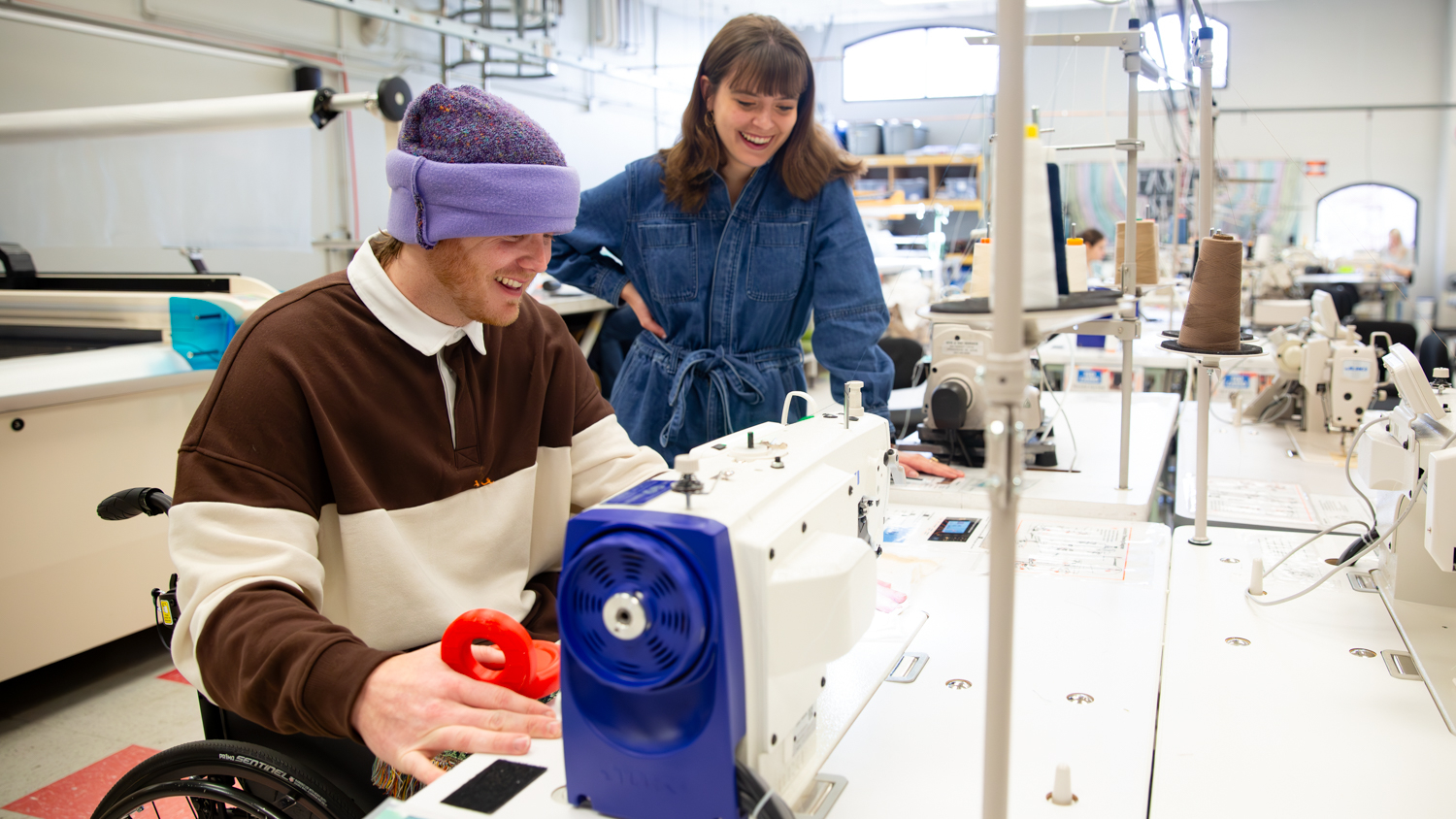Fashion and textile management student Kaleb Spivey has sewn for years, so he enrolled in FTM 219 looking forward to seeing what pieces he could add to his portfolio.
When he entered the Wilson College of Textiles’ fashion studio, however, he quickly encountered an obstacle in his plans for the semester.
“I couldn’t really use anything at all in the studio, at least not the sewing machines, because they didn’t have anything but a foot pedal,” says Spivey, who does not have use of his legs.
The junior from Greenville, North Carolina, approached his instructor, Keysi Barrios, for advice.
Barrios quickly reached out to Sam Pearce, a textile studio lab technician at the Wilson College of Textiles.
“I knew that something needed to be done because I wanted him to be with his classmates and have that interaction because that’s such a special time in the studio,” Pearce says.
Pearce immediately began researching ways to make the studio more accessible. After thorough research, she discovered MovingMood, a consultancy specializing in advising and training companies and institutions in accessibility and inclusive design. They offered a free 3D download of a hand pedal device that can be attached to sewing machines.
Utilizing the 3D download, Pearce collaborated with graduate student Ethan Hill in the Flex Factory to 3D print the necessary piece. She then worked with coworker Tri Vu, a specialty trades technician, to attach the piece to the machine.

The attachment enables the machine to be operated with a hand pedal device, replacing the conventional foot pedal. The device is attached in a way that allows it to be moved to the side, ensuring the machine is usable by individuals with and without disabilities.
“It’s nice to be able to still go to class and talk to people and interact while working, not just sitting at home by myself making clothes,” Spivey says.
Spivey has been able to assist other students in the introduction level course with basic sewing concepts since spending time in the studio. He has always known that he wants to work in the fashion industry and was making clothes long before his time at NC State. After graduating, his goal is to start his own brand.
“I looked at it from a future perspective and how it will be able to help other students after me,” Spivey says. “People don’t necessarily think about stuff like this at first because they don’t have to. It’s great when people like me can tell them what’s going on to help not only me but future students as well.”
Both Spivey and Pearce are hopeful that this adaptation will be the initial step towards making studio spaces accessible for students with diverse abilities in the future.
“I’m trying to be very inclusive in the spaces that I operate and make sure that everybody gets to have the same experience regardless of their access level or ability levels,” says Pearce, “I don’t want there to be any barriers for people to learn.”
This post was originally published in Wilson College of Textiles News.
- Categories:



